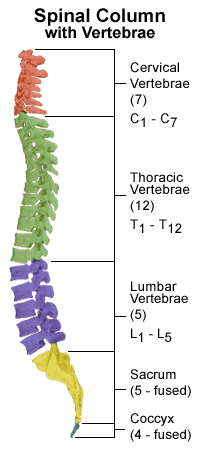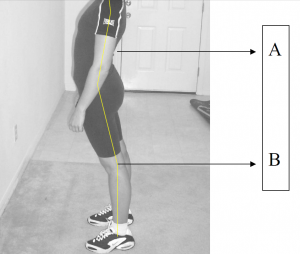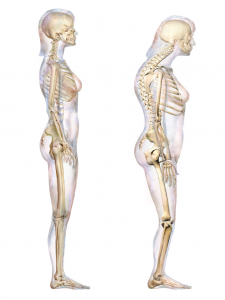Human Spine Anatomy Part 6 – The Spine as a Whole
In this series on the human spine anatomy we’ve been reviewing in detail each area of the spine.
In the final part, we will take a look at the spine as a whole. Some of this information will be a review of the other articles but will help us understand how all parts of the spine work together to perform the spine’s main functions.
What Does the Spine Do for the Body?
The spine helps support our body’s weight, provides posture, allows for our body’s movement and protects the spinal cord.
What Does the Spinal Cord Do?
The brain is like the “command center” of the body. The spinal cord provides a path for communication from the brain to the rest of the body. The spinal cord also carries feedback “messages” from the body back to the brain.
What are the Five Parts of the Spine
Starting at the top of the body the five parts of the spine are called:
- Cervical – the neck region
- Thoracic – the middle back, starting at the neck region and continuing to the bottom of the rib cage
- Lumbar – the lower back, starting at the bottom of the rib cage and continuing to the tailbone
- Sacrum – the pelvic cavity
- Coccyx – the tailbone
 Note: In the previous articles we discussed each region in more detail, click on the links to learn more about each of the five parts of the spine.
Note: In the previous articles we discussed each region in more detail, click on the links to learn more about each of the five parts of the spine.
Normal Curvature of the Spine (Neutral Spine)
In typical human spine anatomy, the spine appears straight when viewed from the back but has three curves when viewed from the side.
- The cervical region bends inward (toward the front of the body).
- The thoracic region bends outward (toward the back of the body).
- The lumbar region bends inward (toward the front of the body).
If an individual has these three curves it is said they have a neutral spine.
Spine Curvature Disorders
There are a few disorders associated with the curvature of the spine including scoliosis, lumbar hyperlordosis and kyphosis.
Scoliosis is a condition in which an individual’s spine curves when viewing it from the back.

Lordosis
By CarpalTunnelEx, via Wikimedia Commons
An individual with lumbar hyperlordosis (also called swayback) has excessive curvature in the lumbar region of their spine. In other words, the lower back is curved inward, as it should be, but it’s curved too much.

Kyphosis
By BruceBlaus, from Wikimedia Commons
Kyphosis (also known as hyperkyphosis or hunchback) is a condition in which the the spine’s outward curvature is excessive. Typically the thoracic region of the spine is curved 20-45°. Any individual with curvature over 45° is said to have kyphosis.
Back Ligaments
Several ligaments are responsible for keeping the spine together and allowing for movement.
The anterior longitudinal ligament (ALL) connects the anterior side (toward the front of the body) of each vertebrae and vertebral disc.
The posterior longitudinal ligament (PLL) connects the posterior (toward the back of the body) side of each vertebrae body and disc. (Remember the vertebral body is the round portion of each vertebrae.) The PLL is located within the vertebral canal.
The ligamentum flava are ligaments which connect laminae from adjacent vertebrae from the neck to the sacrum.
The interspinous ligaments connect the spinous process of adjacent vertebrae.
The supraspinous ligament runs from the lower cervical region to the sacrum and is connected to the spinous process of each vertebrae.
The Human Spine Anatomy
A mammal’s spine is complex and includes many components working together. In this human spine anatomy series we’ve done a broad overview of the anatomy of a vertebrae, the different regions of the spine, and the spine as a whole. Having this basic knowledge is helpful when trying to understanding back pain or disorders of the spine.
References
